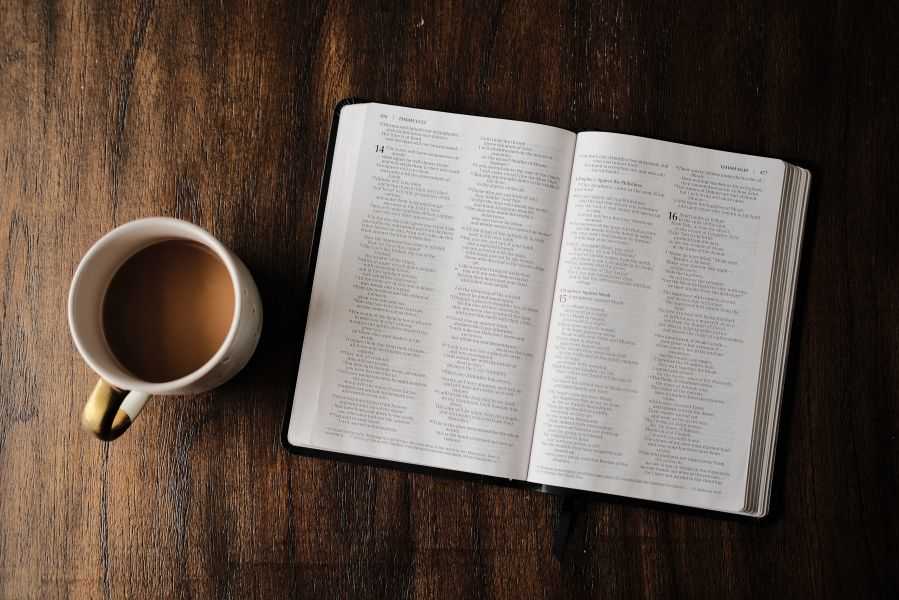天津景点英文导游词1
Temple of Solitary Joy is located at inside west city gate of Ji County, Tianjin City. It is known for its refined architecture skill in Channel's ancient buildings and has got the reputation of Six Best. These are: The earliest Dingshan Gate (Gate of Withstanding Hill) of the ground hall preserved now; The earliest Chiwei object on the Hill Gate preserved now; The earliest plane distribution which took pavilion as the center on the architecture plane; The biggest clay sculptured statue of Avalokiteavara inside a pavilion in China; The Avalokiteavara is also the most ancient high storeyed one; The more precious fact is that the Temple of Solitary Joy has stood unscathed after thousand years of rain, snow, wind and frost and 28 big attacks, hence the most durable ancient Monastery of thousand years.
天津景点英文导游词2
Tianjin is a good choice as a travel destination. With its cool sea breeze and fresh sea air you will definitely feel refreshed. Historical relics, natural scenery, temples, churches, assembly halls and commemorative sites of the Chinese revolution will illuminate Tianjin's past, present and future. Tianjin is honored as 'Building Museum' as it was occupied by nine imperial powers before the founding of the new China, leaving behind many buildings with extraordinary and exotic architectural styles, a real feast for the eye! In the following text let me give you a brief introduction to the Jinmen Shijing (top ten scenic attractions in Tianjin).
Huangyaguan Great Wall :
Located in the mountainous area of Tianjin's northern Ji County, the Huangyaguan Great Wall was first built during the Northern Qi Dynasty (550 - 557) and repaired in large scale with bricks during the Ming Dynasty (1368 - 1644). When appointed as the chief commanding officer in the Ji Garrison (one of the eleven garrisons of the Ming Dynasty), Qi Jiguang added watch towers and other defensive works.
The Huangyaguan Great Wall comes out first in the ten most-visited sites in Tianjin. It is considered to be a miniature of the Great Wall. The entire section is built on an abrupt mountain ridge. Being endowed with both natural beauty and cultural interest, it has become famous as a natural beauty spot and a summer resort. The major scenic area is composed of Huangyaguan Pass and Taiping Mountain Stronghold.
Huangyaguan Pass: In 1984, the people of Tianjin spent three years repairing 3,308 yards of the main wall from Banlagang Mountain in the east to Wangmaoding Mountain in the west. They restored 20 terraces, the Huangyaguan Water Gate, and the Bagua Castle (the Eight Diagrams Castle). The defensive system of the wall is complete. Watch towers, frontier cities, drain holes, emplacements, barracks and other indispensable military facilities are arranged orderly along the wall. Besides, the stele forests of the Great Wall, Beiji Temple, the exhibition hall of famous couplets, the Great Wall Museum (the first museum along the Great Wall) and the Phoenix Fortress have been newly built within the area.
Taipingzhai Great Wall :
Six miles southeast of Huangyaguan Pass is the Taipingzhai Great Wall, another important mountain stronghold of the wall during the Ming Dynasty (1368 - 1644). It is also called Taipinganzhai, meaning "a village of peace and prosperity". Starting from Banlagang Mountain in the east and arriving at Guafu Tower (Widow Tower) in the west, it winds through the precipitous mountains for about 955 yards.
The wall is an important component of Huangyaguan Great Wall. There are six watch towers, one battlement, and one shortcut leading to the wall. The architectural styles of the military towers vary considerably. There are square, round, solid and hollow towers, with some inside and others outside the wall. Beside the shortcut, there is a small citadel where an 8.5-meter statue of Qi Jiguang, the chief commanding officer of Ji Garrison (one of the eleven garrisons in the Ming Dynasty) is located. The local people built this statue in order to commemorate his great contribution to frontier peace and stability in that period. To the west of the citadel, a section of the wall extends 33 yards out to where a sentry post was situated.
At the western end of the wall is a square stone tower called Guafu Tower, "Widow Tower" in English, built by twelve wives whose husbands died during the construction of the wall in the Ming Dynasty. The widows erected this tower to commemorate their husbands' notable exploits. The tower has two levels and measures 13-meters (14-yards) high. Arched arrow windows are on the four sides of the tower.
Besides these cultural points of interest, Taipingzhai Great Wall is also famous for its amazingly impressive scenery. Zigzagging along the mountain ridge for over 984 yards, the wall looks very much like a giant dragon flying through clouds.
Mt. Panshan Scenic Area :
Covering an area of 106 square kilometers (about 26193 acres), Mt. Panshan Scenic Area is located in Jixian County, 110 kilometers (68.4 miles) away from Tianjin, 88 kilometers (54.7 miles) away from Beijing. As the name suggests, the scenic area is mainly Mt Panshan–oriented. Endowed with natural beauty and a historical heritage, Mt Panshan is known as 'The First Mountain East of Beijing' and is listed as one of the top fifteen mountains in China.
The mountain acquired its present name, early in the Eastern Han (25-220). Taizong , the second emperor of the Tang Dynasty (618-907), was prodigal of his praise of its scenery on his chance visit when he led the army in a campaign. Seventy-two temples, thirteen pagodas and numerous Xanadus and towers were built on the mountain in the Ming Dynasty (1368-1644) and the Qing Dynasty (1644-1911). Qianlong, a brilliant and wise Qing Dynasty emperor was so impressed that he made thirty or so visits and wrote 1366 poems to express his admiration of the area. In the first half of the twentieth century, the whole resort all fell to ruin due to hostilities and neglect. It has undergone a process of restoration since the 1990s and is now regaining its fame.
It is famous for jade pine trees, strange and astonishing peaks, clear waters, grotesquely shaped rocks and clusters of ancient temples. On the mountaintop, numerous pines hide the sky from view and block out the sunshine. Rugged rocks in a variety of shapes, some of which resemble a toad, a general or a boa, will greet you in the middle of the mountain. At its foot, clear water splashes on the rocks. The mountain consists of five peaks, with the main one, Guayue (Moon Hanging) Peak. Although Guayue Peak is only 857 meters (2811.7 feet) above sea level, to the north it is possible to see a section of the Great Wall while to the west Mt Taihang can be seen.
From the Wei State during the Three Kingdoms Period (220-280) onwards, emperors enthusiastically commissioned the building of temples, towers and Xanadus resulting in over 160 such sites. There are four main temples: Tiancheng Temple (God Proposing Temple), Yunzhao Temple (Cloud-Hiding Temple), Wanfo Temple (Ten Thousand-Buddha Temple) and Wansong Temple (Ten Thousand-Pine Temple). Tiancheng Temple built in the Tang Dynasty, was enlarged and repaired in the Ming and the Qing dynasties. To the east of this temple stands the Ancient Dagoba. As the biggest tower in this mountain, it has thirteen floors. The roof of the Yunzhao Temple was a golden yellow, a color that normally was only allowed to be used on imperial buildings. By granting permission for this, Emperor Qianlong demonstrated his approval and admiration of the mountain. Wanfo Temple (Ten Thousand-Buddha Temple) has 10,960 small Buddhas statues.
天津景点英文导游词3
Entering the Temple , the first comes to sight is 10 m high gate, on the arch of which there hangs a horizontal inscribed board: Temple of Solitary Joy. The single eaves ground hall roof was the roof building form during the western Tsin (AD265-316) and Southern and Northern Dyansty (420-589) period, which was called Siadading in ancient time and now it is called big roof. On the two ends of the plane ridge, there are inward Chiweis. Chi denoted sparrow hawk in ancient time, which is a kind of fierce bird. The stand base of the gate is comparatively low, but the hall pinnacle is much higher above eaves and the pottery animal figures look sturdy; solemn and sturdy. There is no ceiling inside the pinnacle, therefor the painted beam and purlieus are visible. The whole piece is exquisitely wrought, simple arranged and skillfully done, for which people gasp in administration.
Crossing the gate, one comes to the core building - Avalokitesvara Pavilion, 23 m in height. Form outside appearance, it is two storeyed, but inside there is a hidden storey, thus three storeyed in fact. On the eaves corners, pottery unicorns are sculptured, on which little Buddha statues ride. Copper bells are hung under eaves corners, swaying with the wind, a specially refined scene. The most attractive thing is the structure of Dougong (sets of brackets on top of the columns supporting the beams within and roof eaves without——each set consisting of tiers of outstretching arms called Gong, cushioned with trapezoidal blocks called Dou). It is made of overlapping Dougong shaped wood blocks and bow shaped horizontal wood bars by adopting 24 forms with each layer stretching out as bracket, big in upper part and small in lower part, thinly scattered, steady and sturdy. It makes eaves of the pavilion look like flying, far and deep in the sky, a beautiful and magnificent view.
Entering the Avalokitesvara Pavilion, the very sight is a huge standing Avalokitesvara Statue. If one stands by it, his height is only up to her ankle. The Statue, 16.27 m in height, is the biggest clay sculpture of Avalokitesvara in China. Two statues of attendant Bodhisattvas under the knee of Avalokitesvara are also 3 m in height. On the crown of the head of Avalokitesvara, there are 10 small Avalokitesvare's heads, hence it is called 11 faces Avalokitesvara. Reviewing around the inner part of the pavilion, one can discover that pillars of high and low storeys are not directly linked through, but the pillars of the upper storey are ed into the arch head of that of lower storey. The upper storey of the pavilion is in a form of six corners empty well, while the lower storey is in a form of square empty well. This kind of structure is not only beautiful and strong, but also adds the space of the upper part of Budha statues. On the four walls inside the pavilion, colorful murals are painted, the theme of which is the images of 16 Arhats and 2 Ming Dynasty Emperors, which are the earliest subjects of Buddhism. On he murals, 2 m high Arhats with 3 heads and 4 arms are extremely lifelike and Ming Emperors on the four walls are full of power and grandeur. On the upper part of the murals, there are mountains, forest, cloud and river, while on the lower part, there are paintings of secular themes with vivid and natural lines, which embody the superb the skill and arts of painting of ancient Buddhism in China.
推荐文章
黑龙江高考排名31220左右排位文科可以上哪些大学,具体能上什么大学2024-06-09 12:16:55
厦门华天涉外职业技术学院的民航运输服务专业排名怎么样 附历年录戎数2024-06-09 12:13:50
福建高考排名2890左右排位物理可以上哪些大学,具体能上什么大学2024-06-09 12:09:30
四川高考排名166380左右排位理科可以上哪些大学,具体能上什么大学2024-06-09 12:04:40
河南高考排名322500左右排位理科可以上哪些大学,具体能上什么大学2024-06-09 12:00:47
湖北高考排名111530左右排位物理可以上哪些大学,具体能上什么大学2024-06-09 11:57:53
贵州天河潭风景区的导游词2023-08-12 02:09:49
励志名言名句集锦(2)2023-08-22 03:02:24
寒假优秀作文合集2023-08-11 10:07:24
励志电影猜火车影评2023-08-20 05:38:13
贵州天河潭风景区的导游词2023-08-12 02:09:49
写关于长城的导游词2023-08-24 08:38:24
北京香山导游词作文范文2023-08-14 16:01:25
四川九寨沟导游词(精选十五篇)2023-08-25 20:30:57
湖北省有名景点导游词2023-08-16 06:59:48
关于颐和园导游词(十五篇)2023-08-11 18:06:54





